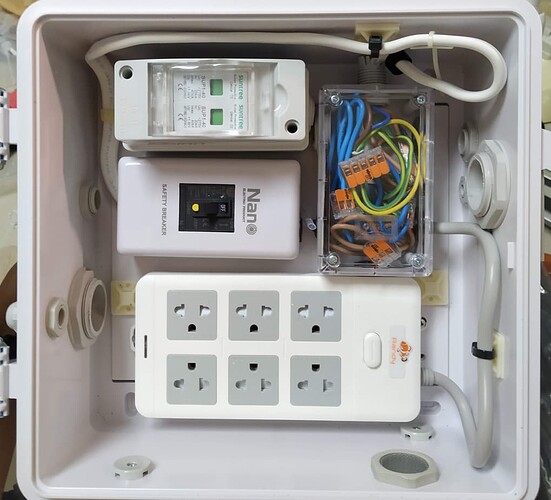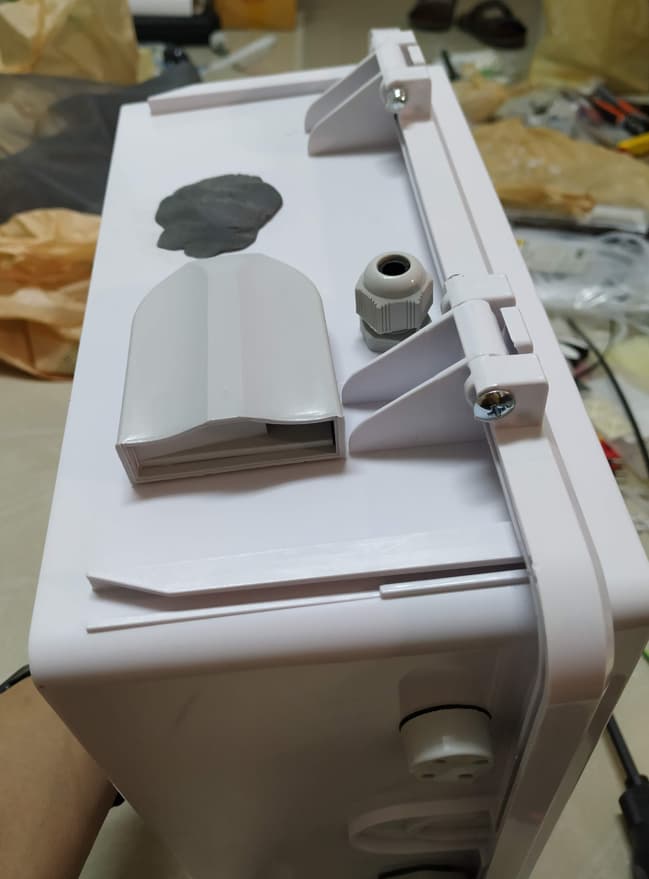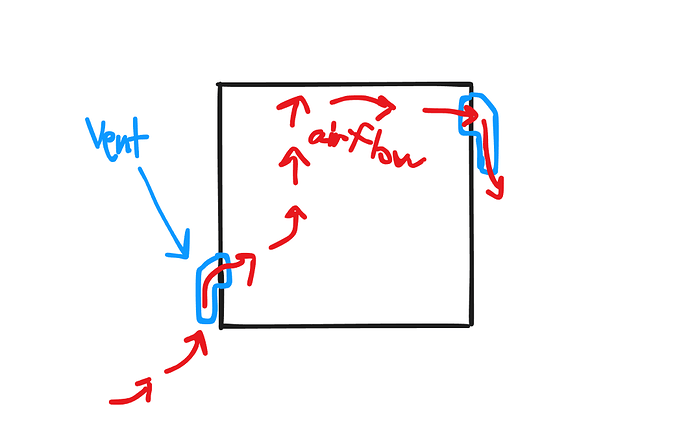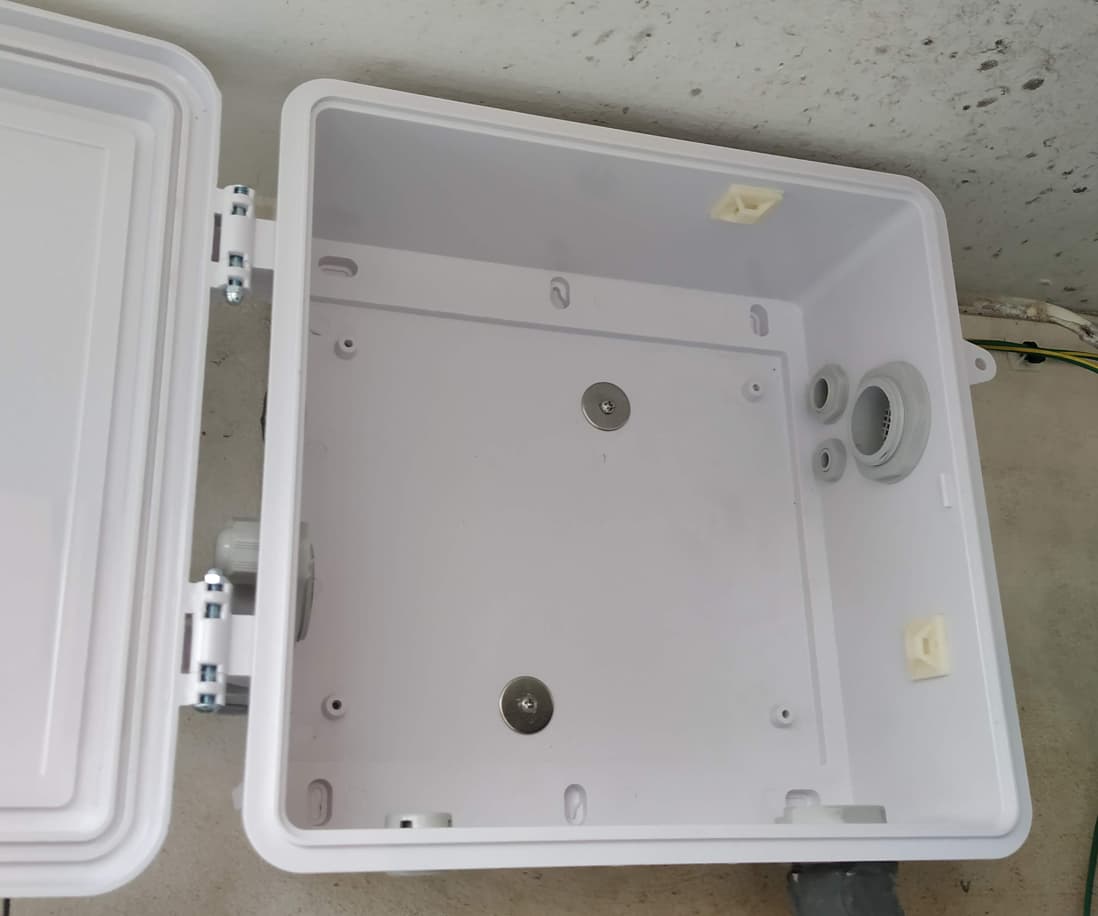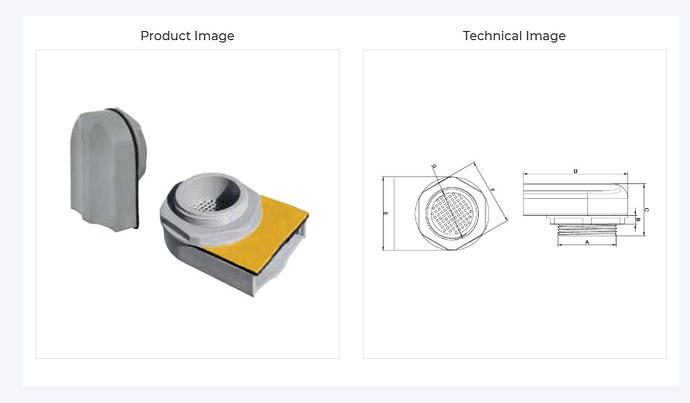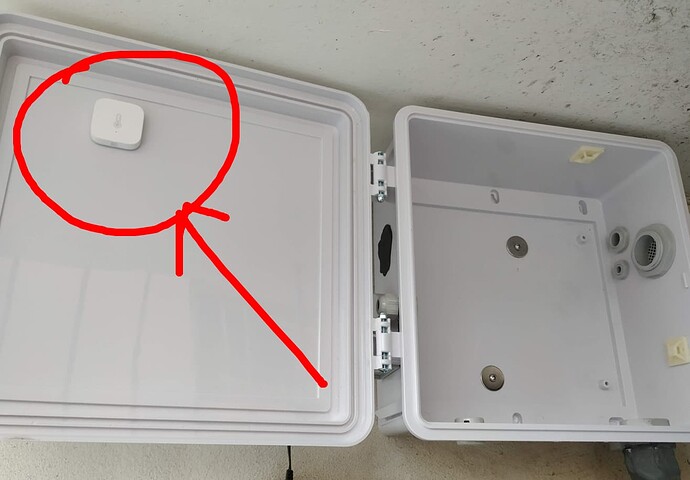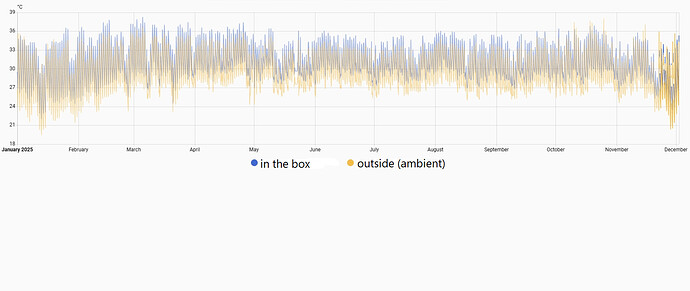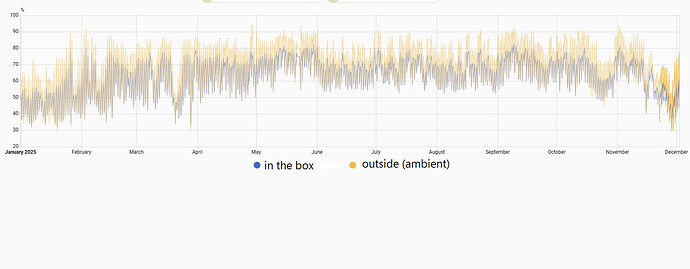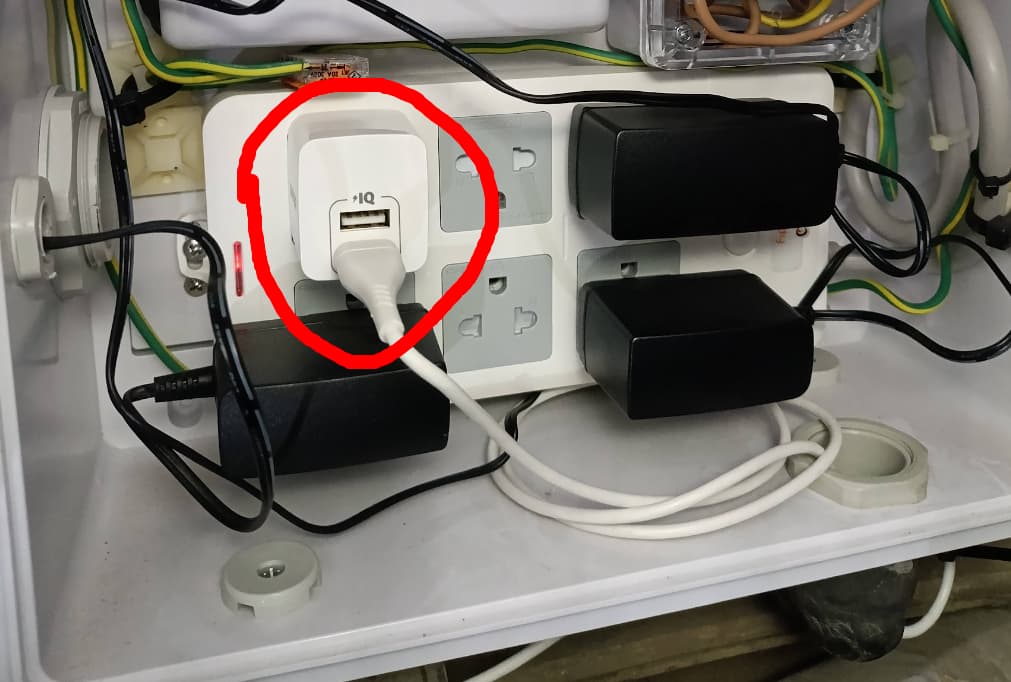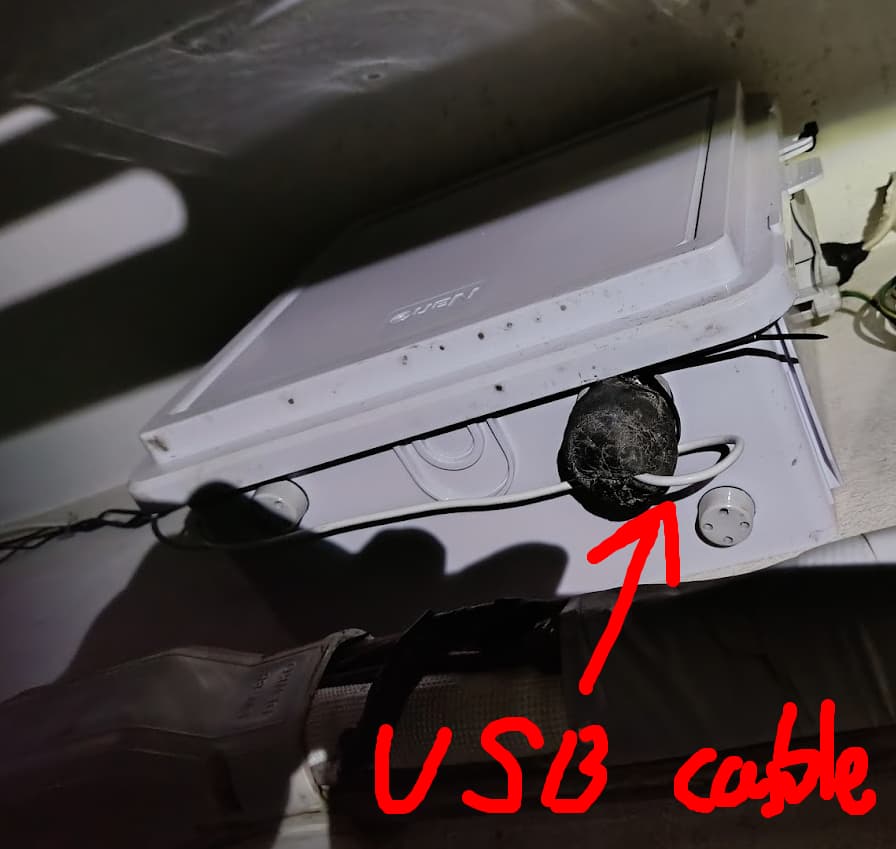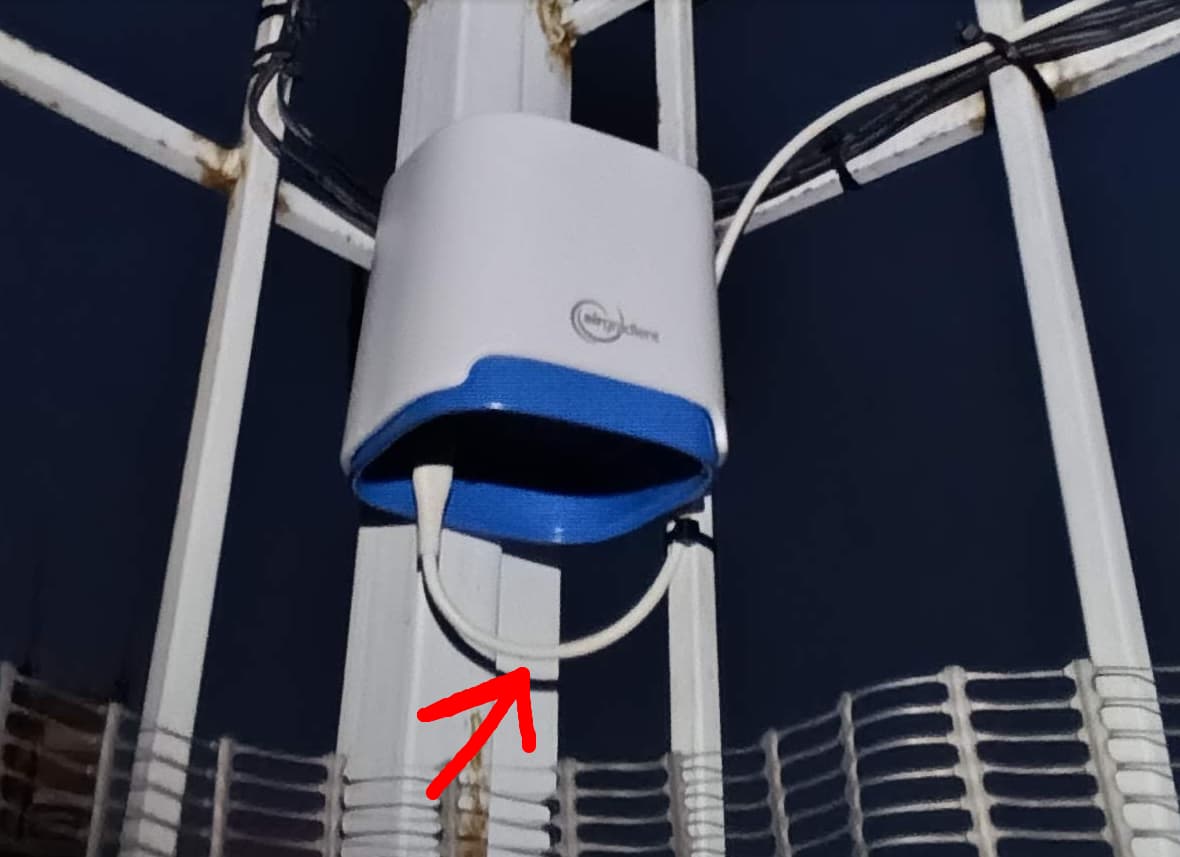Hi @cristoferdisoza0, appreciate your kind words, and thank you for joining our community.
While I’m not an electrical professional (and sorry for my late reply), I want to share with you as a (noob) DIYer.
The climate here in Bangkok (Thailand) may not be as extreme as in Dubai. But I’d say it’s still consistently very hot throughout the year.
I installed my AirGradient Open Air (O-1PST) on my balcony, and it has been there running rock solid for 7 months.
My electrical setup for the Open Air is quite simple.
And, just in case, I wouldn’t say that this is something good or should be taken as an example for those who are reading this. Please consult a local electrician.
Well, in my case, I just put an AC outlet (it has a built-in thermal breaker inside to protect an overload) connected to a dedicated SPD (surge protective device) and an RCD (residual current device - or a leakage breaker (think about a GFCI outlet)) inside a waterproof electrical box which was installed in the shade (not directly exposed to rain and the sun) on my balcony. (I’d say this is kind of a noob temporary subpanel, as I have my consumer unit (with a thermal magnetic breaker) in the upstream for primary protection.)
This box has also been feeding a few Wi-Fi cameras for almost 3 years, and everything is still ok. I think the box itself is pretty well at preventing dust and liquid, or any debris from the outside. Stuff inside usually always looks new when I open the box.
…I know the wire and my Wago may be a little bit too tight in that box. Forgive me.
I modified the box by adding some cable glands where I could run the wire properly, and some ventilation, drainage blind stop.
I added two ventilation glands to the box, one in the lower side, and one in another side (higher). I assumed that it should be able to have some airflow and could get some hot air out (but I didn’t really measure it scientifically).
This is the ventilation gland I mentioned: https://onka.com.tr/panel-airflow-equipment-grey
And this is a drainage blind stop that I installed at the bottom of the box: https://onka.com.tr/drenage-equipment-m16-grey
I put a temperature and humidity inside the box as well to check if there’s something wrong.
The temperature inside the box is usually 2-3 degrees Celsius higher than the outside ambient temperature throughout the year as you can see in the chart below. The blue line is the temperature inside the box, and the yellow line is the ambient temperature outside.
The humidity in the box is a bit lower than outside.
This is a USB power supply that I connect my Open Air to. It’s an Anker PowerPort Mini 12W (A2620). Simply meets the requirement of the Open Air which needs a 5V 2A power supply (single-port use only, though).
I tried my best to keep the box sealed as much as possible, like using duct seal compound to seal some gaps (kind of dirty work though).
Here’s my AirGradient Open Air. It is exposed directly to the sun in some parts of the day (I don’t have a better position to install it at the moment), and it is still working.
Also, make sure you have a drip loop here to prevent water ingress coming from the USB cable when it rains (although I think the provided USB cable is kind of forcing you to have a drip loop itself, but it’s worth mentioning).
This is definitely not a perfect setup at all (more of a mess). I’m considering having a backup power supply for my Open Air and cameras using a DC UPS or a power bank with pass-through charging (a power bank that allows charging and discharging at the same time), I have not really tried it yet.
And your point about the EMI/RFI is interesting as well, but I haven’t experienced it myself in this case of the Open Air.
My only experience of having an unstable reading was when I tried feeding an undervoltage supply (below 4.3-4.4V DC) to my AirGradient ONE (an indoor monitor, not the Open Air), the CO2 reading insanely hiked. I think I want to write something about this more next time.
